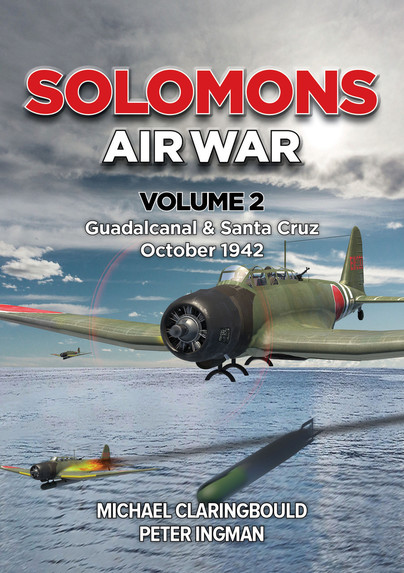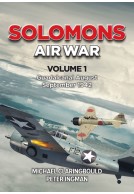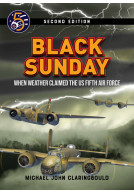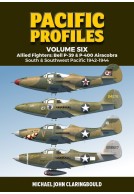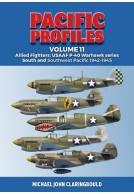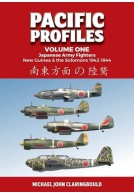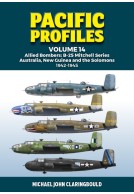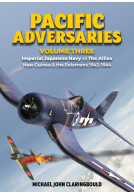Solomons Air War Volume 2 (Paperback)
Guadalcanal & Santa Cruz October 1942
Pages: 200
Illustrations: fully illustrated; colour
ISBN: 9780645700459
Published: 31st January 2024
(click here for international delivery rates)
Order within the next 11 hours, 20 minutes to get your order processed the next working day!
Need a currency converter? Check XE.com for live rates
This second volume of Solomons Air War chronicles aerial warfare in the Solomon Islands theatre during the critical month of October 1942. It can be read alone or as part of the ongoing Solomons Air War series.
October 1942 saw an explosion of air activity in the Solomons. During the first three weeks of the month busy Tokyo Express runs landed thousands of IJA troops on Guadalcanal in advance of a new offensive to be launched against the Marine garrison. This was presaged by a battleship bombardment of Henderson Field and daily air raids against the same target.
Against this background Cactus Air Force was fighting for its life, and very nearly reached the level of exhaustion. Somehow just enough replacement F4Fs and SBDs were scraped together from the New Hebrides to keep it in business. Important support was provided by COMAIRSOPAC B-17s and PBYs operating from Espiritu Santo.
In the middle of the month an enormously powerful IJN force arrived in the theatre, based around five aircraft carriers. This force threatened to overwhelm the USN which at the time had only one carrier in the South Pacific, the USS Hornet. However, the timely arrival of the USS Enterprise evened the ledger and the fourth carrier battle of the Pacific War, the Battle of the Santa Cruz Islands, was fought over 25-27 October.
This chronicle has been written using both Allied and Japanese sources, to give a fresh, factual and highly detailed account of all aspects of the Solomons air campaign.
The Solomons Air War series by Michael Claringbould and Peter Ingman is an in depth look at the air campaigns in the Solomon Islands located in the South Pacific. This recent volume is the second in the series and it looks specifically at the at the air battles over the island of Guadalcanal and the naval battle known as the Battle of the Santa Cruz Islands during the crucial month of October 1942. This was a crucial period in the Pacific theatre and Claringbould and Ignman continue to show why they are two of the leading historians and authors in South Pacific air campaigns. Their use of copious primary sources both Allied and Japanese is commendable, and it really provides the reader a more accurate appraisal of the violent and costly air battles fought over the island of Guadalcanal and the sea around the Santa Cruz islands.
Aviation Enthusiasts
The book begins with a very useful look at Allied and Japanese acronyms to include ranks and organisations. Next there is a short introduction explaining the rationale of this specific series as a companion series and follow on to the previous South Pacific Air War series. The first chapter is an overview of Allied airpower in the region and their bases. The second chapter is an overview of the Japanese air power based in the region both naval and land based. Chapter three is when the action starts with the hit and run raid by the USS Hornet, against the Shortlands Islands during the first week of October while also chronicling more Japanese raids on Henderson Airfield on Guadalcanal. The next chapter looks at the Allied efforts using SBD Dauntlesses, TBF Avengers, F4F Wildcats, and many other types to stop what became known as the Tokyo Express which was the Imperial Japanese Navy's (IJN) resupply and reinforcement missions made by destroyers, fast transports and other ships to land men and supplies on Guadalcanal usually under the cover of darkness but several runs were made in the daytime. The authors using both Allied and Japanese primary sources have pieced together the most accurate summary of the airstrikes, the combat air patrols, and the losses incurred by both sides. The amount of overclaiming by both sides is particularly intriguing and it is examined in detail in this volume. The next two chapters are about the defense of Henderson Airfield renamed by the Allies after capturing it from the Japanese earlier in the year. The period covered is the second and third week of October and it is full of several accounts of dogfights, bombing raids against Henderson Field and US Navy ships. Japanese G4M Betty bombers, Aichi D3A Vals, B5N2 Kates, and several types of Japanese floatplanes feature prominently in these raids. The efforts to counter them with USMC, USN, and USAAF fighters along with bombing raids by small numbers of B-17 Flying Fortresses fill the pages of these two chapters. Losses on both sides, both combat and non-combat, were high and the authors' attention to detail is showcased well here. The next chapter is about the prelude to the Japanese offensive near the Santa Cruz Islands and in a stark revelation, the authors show how the Cactus Air Force on Henderson Airfield was down to 43 airplanes total to include bombers and fighters with which to repulse this latest Japanese effort. The Japanese task force was initially composed of five aircraft carriers but one of them, the Hiyo had to withdraw very early on, but its air group participated in the battle from airfields on land. This would be in support of the land offensive by the Japanese to take Henderson Field on Guadalcanal. Chapter 8 is an account of the first part of the Battle of the Santa Cruz Islands. The use of fantastic artwork, orbats, and maps is a key feature throughout this book but for this chapter and the next two chapters it is extremely beneficial and appreciated. The gripping accounts of waves of attackers from both sides fill these chapters. The Japanese waves quite often being decimated but some were after their bombs and torpedoes had been delivered. The loss of the aircraft carrier, USS Hornet and the heavy damage that USS Enterprise incurred were a devastating blow to the US Navy, but the Japanese also had the fleet carrier Shokaku heavily damaged and a light carrier, Zuiho was also heavily damaged. Again, like the Battle of Midway, the biggest loss to the Japanese was the loss of so many experienced aircrew, which the Japanese would struggle to replace unlike the Americans. However, with the loss of the USS Hornet that meant the Americans only had two fleet carriers operational in the Pacific now. The penultimate chapter looks at the aftermath of the battle and the follow up attacks against retreating Japanese forces and the Imperial Japanese Army (IJA) units on Guadalcanal with USAAF and USMC close air support missions flying in support of mopping up operations. Lastly, there is a short conclusion chapter that is a great examination of the losses and the strategic, operation, and tactical implications of this period to both the Allies and the Japanese. There is a very detailed set of three appendices at the end, with the first one showing the Allied aircraft losses for October and the second one showing the Japanese losses for this same period. The third appendix shows the cumulative losses from 7 August 1942 to 31 October 1942. The last section before the index is the list of Allied and even more impressive Japanese language sources used in the research for this book to include intelligence reports, operational summaries, and war diaries.
This is another outstanding volume from Avonmore Books and the fantastic duo of Claringbould and Ignman. The abundance of well-chosen photographs and artwork are also standout items that all readers will appreciate. The detailed accounts of dozens of air battles seen through the prism of both Japanese and Allied viewpoints at all levels is a commendable feature in this volume and the entire series as well. I highly recommend this book and the rest in the series to anyone with an interest in the Solomons campaign and Pacific theatre air campaigns. You will struggle to find anything in previously published works that combines such incredible detail and well illustrated summaries of this crucial period in Second World War history.
This continues the story from volume 1, which told the story of August and September. Now for volume 2 and which is confined to the story of the battles in October 1942. At the heart of the story are the fortunes of Henderson Field, on Guadalcanal, home to American units best known as the 'Cactus Air Force', where Cactus was the US codename for Guadalcanal. It was an airfield originally started by the Japanese but captured and then used by the US Marines. At the start of the book is a map of the region, with the Solomons and Guadalcanal at the centre, plus Japanese forces to the North East in New Britain, while US and Australian units were south east, in the New Hebrides and New Caledonia, with the Santa Cruz islands to the east. The distances between them all was a major factor in the story, while Japanese units used destroyers to bring reinforcements at night to the army forces on Guadalcanal, the so-called 'Tokyo Express' sailing down 'The Slot'. US forces tried to stop them and there was a foray into the area by the USS Hornet, which then withdrew. A wide variety of aircraft types were used by both sides, including a good mix of flying boats and smaller floatplanes, fighters such as Wildcats and Zeros, plus bombers such as B-17s and Japanese Bettys. Mixed fortunes for both sides throughout the month, and rounded off with another carrier battle at the Battle of Santa Cruz, which resulted in the loss of the USS Hornet.
Military Model Scene
While this is a follow on from volume 1, I think this does make interesting reading just by itself. The story is illustrated with archive photos throughout the book, along with plenty of useful colour profile artwork of the many aircraft types involved. Plenty of instances of overclaiming but having had reference to official records from both sides, the accurate data, which even includes the names of the aircrew, I found this an really good read.
"Highly recommended."
Aviation News - June 2024







